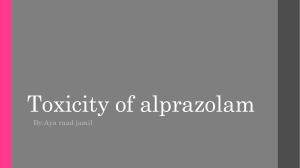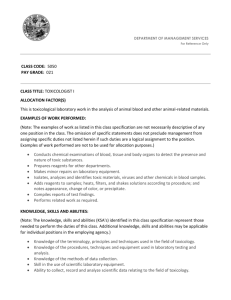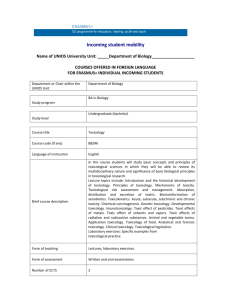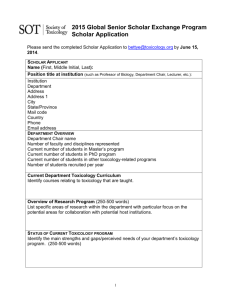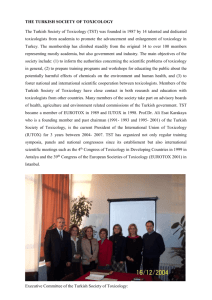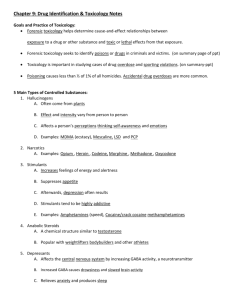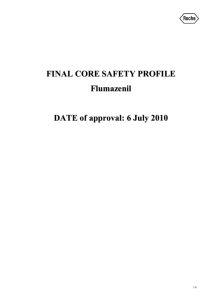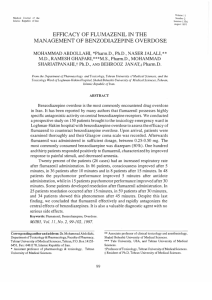here - American College of Medical Toxicology
advertisement
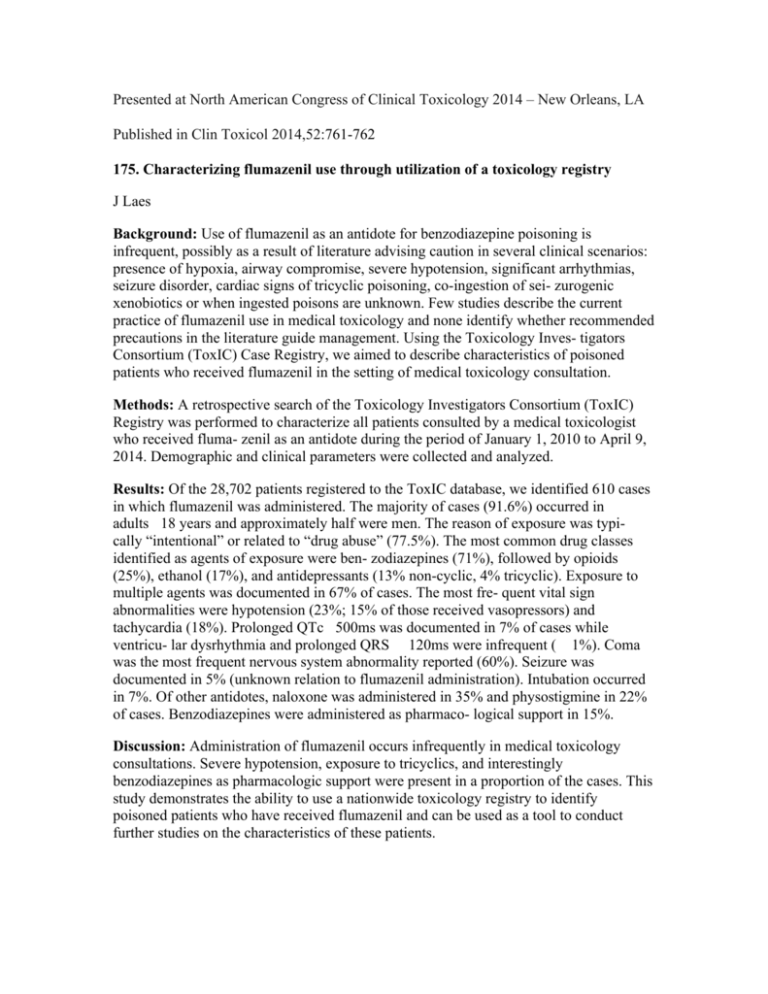
Presented at North American Congress of Clinical Toxicology 2014 – New Orleans, LA Published in Clin Toxicol 2014,52:761-762 175. Characterizing flumazenil use through utilization of a toxicology registry J Laes Background: Use of flumazenil as an antidote for benzodiazepine poisoning is infrequent, possibly as a result of literature advising caution in several clinical scenarios: presence of hypoxia, airway compromise, severe hypotension, significant arrhythmias, seizure disorder, cardiac signs of tricyclic poisoning, co-ingestion of sei- zurogenic xenobiotics or when ingested poisons are unknown. Few studies describe the current practice of flumazenil use in medical toxicology and none identify whether recommended precautions in the literature guide management. Using the Toxicology Inves- tigators Consortium (ToxIC) Case Registry, we aimed to describe characteristics of poisoned patients who received flumazenil in the setting of medical toxicology consultation. Methods: A retrospective search of the Toxicology Investigators Consortium (ToxIC) Registry was performed to characterize all patients consulted by a medical toxicologist who received fluma- zenil as an antidote during the period of January 1, 2010 to April 9, 2014. Demographic and clinical parameters were collected and analyzed. Results: Of the 28,702 patients registered to the ToxIC database, we identified 610 cases in which flumazenil was administered. The majority of cases (91.6%) occurred in adults 18 years and approximately half were men. The reason of exposure was typically “intentional” or related to “drug abuse” (77.5%). The most common drug classes identified as agents of exposure were ben- zodiazepines (71%), followed by opioids (25%), ethanol (17%), and antidepressants (13% non-cyclic, 4% tricyclic). Exposure to multiple agents was documented in 67% of cases. The most fre- quent vital sign abnormalities were hypotension (23%; 15% of those received vasopressors) and tachycardia (18%). Prolonged QTc 500ms was documented in 7% of cases while ventricu- lar dysrhythmia and prolonged QRS 120ms were infrequent ( 1%). Coma was the most frequent nervous system abnormality reported (60%). Seizure was documented in 5% (unknown relation to flumazenil administration). Intubation occurred in 7%. Of other antidotes, naloxone was administered in 35% and physostigmine in 22% of cases. Benzodiazepines were administered as pharmaco- logical support in 15%. Discussion: Administration of flumazenil occurs infrequently in medical toxicology consultations. Severe hypotension, exposure to tricyclics, and interestingly benzodiazepines as pharmacologic support were present in a proportion of the cases. This study demonstrates the ability to use a nationwide toxicology registry to identify poisoned patients who have received flumazenil and can be used as a tool to conduct further studies on the characteristics of these patients.
